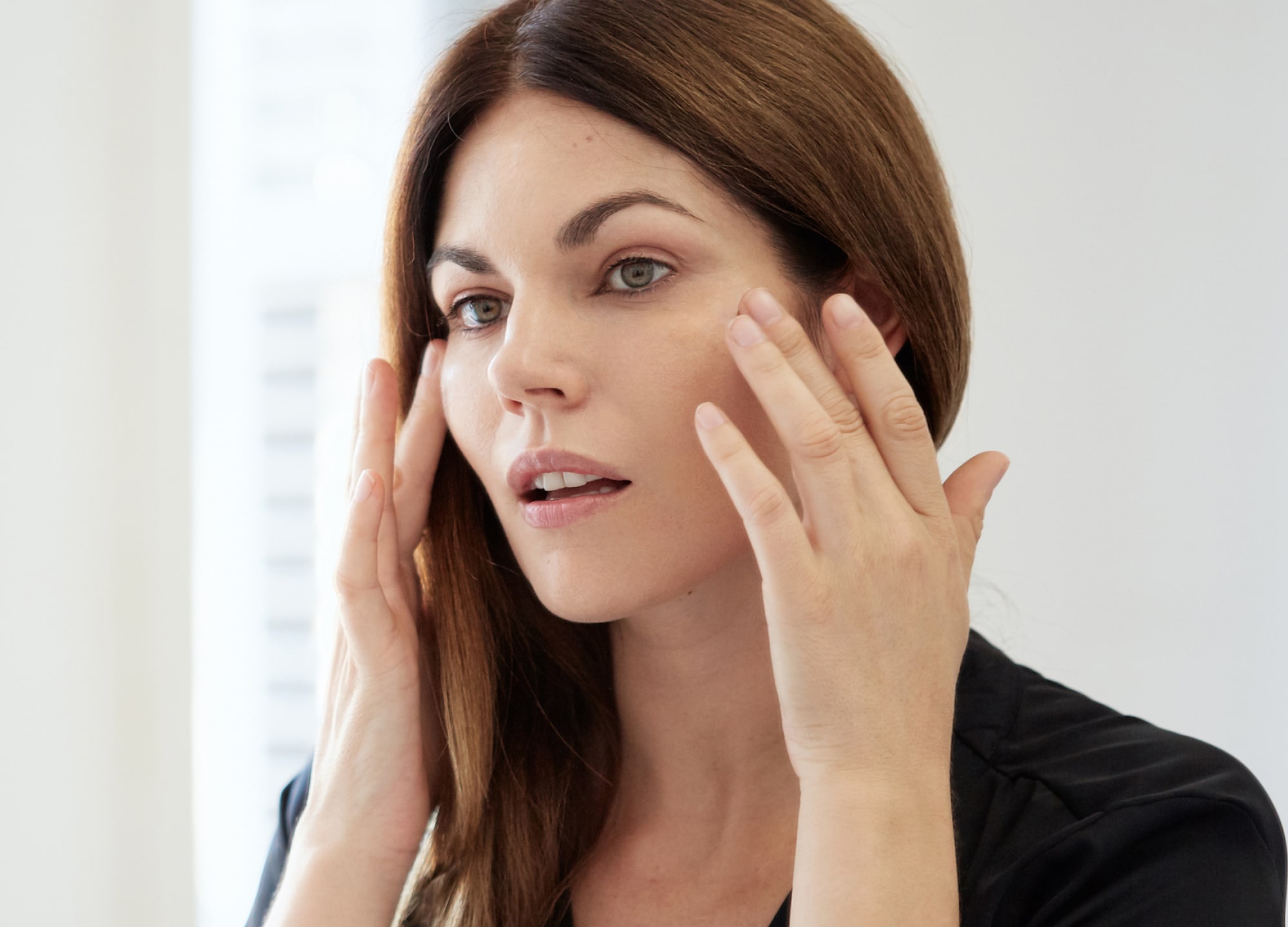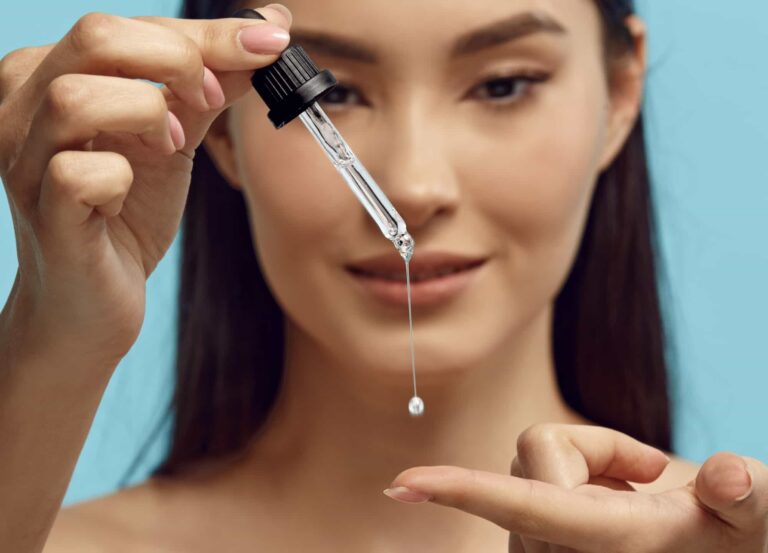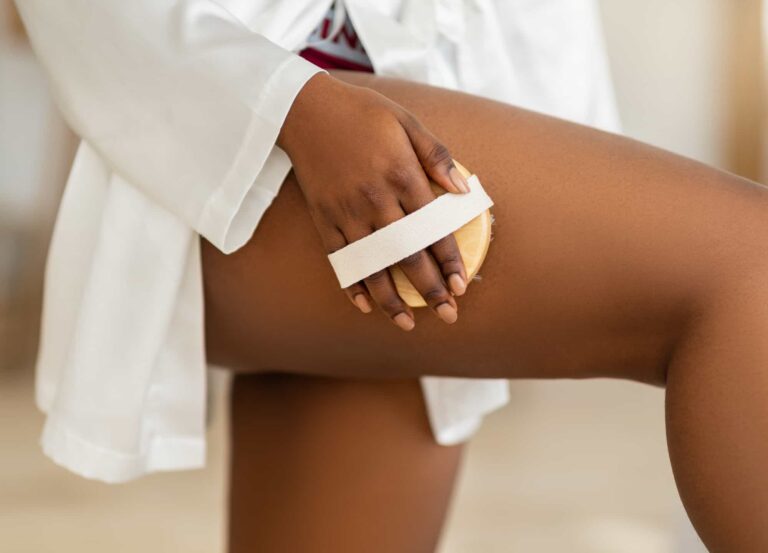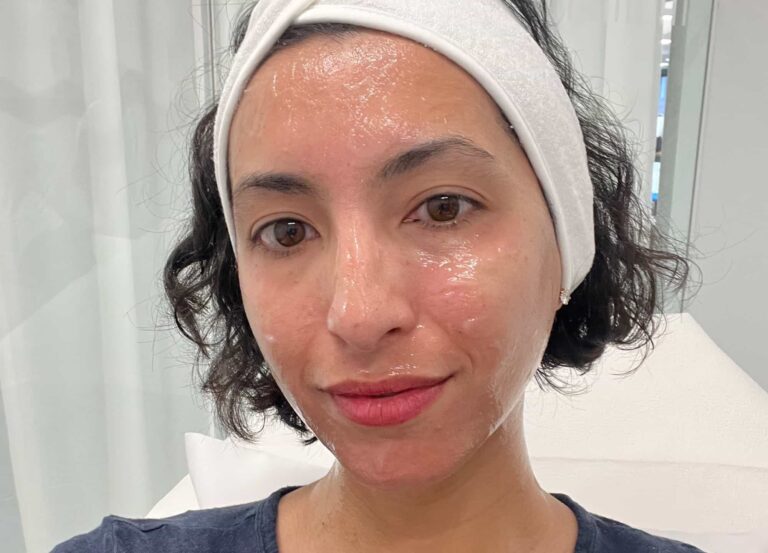In the world of aesthetic treatments, it’s rare that a truly novel type of technology hits the market. Admittedly, most new devices (and even injectables) are variations on an existing theme. That’s part of the reason that doctors were buzzing when Ellacor, a dermal micro-coring device, received clearance last year from the U.S. Food and Drug Administration (FDA). A truly first-of-its kind treatment, hollow needles are used to extract thousands of tiny micro-cores (about 0.02 inches in diameter) of skin. Up to 8% of the total surface area of the skin can be removed in total, yielding an overall skin tightening effect as the holes close up and heal.
While we’ve previously reported on micro-coring, there’s recently been increased talk about Ellacor’s potential for (potentially permanent) side effects, with doctors debating just how risky this procedure is. So in our second installment of Doctors Debate, we asked New York City board-certified dermatologist Dr. Paul Jarrod Frank, a proponent of the procedure, to share his thoughts. We asked the same of Dr. Ben Talei, a board-certified facial plastic surgeon in Beverly Hills, California, who is an outspoken critic. Here, more on what they had to say, plus the bottom line on the safety and efficacy of this new treatment.
“I’m excited about the results”: the case for Ellacor
According to Dr. Paul Jarrod Frank, a board-certified dermatologic surgeon in New York City
“Ellacor is the first of its kind and an entirely new category of treatment. It’s not free from downtime or risk, which is part of the reason it didn’t go to mass release. The main downside is that patients may have visible recovery for a week and especially for the first 48 hours as the holes close up. It’s a dermatological, surgical procedure, and there are open wounds. There’s an expected healing phase that has to be managed appropriately, and we’re still ironing out the management of healing—which is part of the reason this isn’t going into every average dermatologist’s office or medspa right now. We’re still finding the finesse of minimizing downtime and risk while achieving maximum efficacy.
But so far, I’m enthusiastic about it. I’ve done about three dozen treatments, and I haven’t seen anything that’s worrisome. Every patient has been happy and signed up for treatment number two. I’ve even started to use it to treat areas of the body, such as above the knees and on the décolletage. That’s come out of the confidence that I’m getting good results on the face. [Editor’s note: Ellacor is currently FDA-cleared only for use on the mid- to lower face.] Slow healing and hyperpigmentation are risks, but I have not seen any scarring or permanent hyperpigmentation. Some people take longer to heal, and I’ve seen some temporary hyperpigmentation but not in an increased increment as compared to after other treatments such as Fraxel or Morpheus8. I haven’t had any patient tell me their skin has permanently changed in a negative way. If you’re concerned or a high-risk patient, you can always stick to alternate treatments that have a longer track record.
As with any procedure, there are different things that need to be considered in order to achieve great results. There’s patient selection and patient expectation. In the case of Ellacor, using the appropriate anesthesia is very important, as it can affect how much blood there is, how much bruising, and how the holes close up. There’s also the skill of the person performing the procedure. Even though the machine does have specific settings, there are still variabilities in those settings. We can control the number of cores taken out as well as the depth. There is a vacuum that removes the cores of skin, but there’s still practice and skill required to make sure they’re fully removed. If they get stuck, there’s unnecessary trauma to the skin and the efficacy can be affected. Finally, post-procedure care is very important. There are different theories as to what works best, and only time will tell what the right option is. This technology is, of course, going to evolve over the next few years, just like the current iterations of things such as Fraxel and radiofrequency microneedling that we have now are so much better than when they first came out.
There’s always a backlash when things come out, but I think it’s been overblown in this case. There are only a dozen or so doctors who have this device and only a few hundred people who have had it done. So I find it hard to believe when doctors say they are seeing ‘so many complications,’ or on the flip side say, ‘I use this all the time.’ Both negative and positive things are amplified on social media. As the rollout of this device ramps up, I have no doubt that we’ll be seeing more complications. It does have some inherent risks, and it’s going to end up in the hands of people with no experience. I’d never say that this—or any device that has visible results—is a panacea with no risks, and I’m cautious about managing the potential for complications. But I’m excited about the results.”
“The treatment is too high-risk for most skin types”: the case against Ellacor
According to Dr. Ben Talei, a board-certified facial plastic surgeon in Beverly Hills, California
“Ellacor is primarily intended to be used in light-skinned patients in their 60s and 70s, patients with thin skin that has an easier healing capacity, and mainly in those who don’t have issues with healing or sun exposure. It is an option given to patients who have had little response to radiofrequency or who don’t want a surgical facelift.
There are many potential negative side effects, and we are seeing them occur fairly rapidly as the device has been released onto the market. If a patient doesn’t heal perfectly, they may develop pigmentary changes in the skin that may or may not resolve. The punched areas where skin is removed may lose pigment slightly upon healing and become atrophic, potentially causing pitting in the skin. Similarly, they may also produce a rough, granular texture to the skin that has a minor, acne-like appearance, with ripples, divots, or pock marks, if the tiny holes don’t heal perfectly. If this occurs, it may be very difficult or impossible to fix. I have already seen this issue in several patients, who are quite distressed. Some of the issues will soften over time and become less noticeable—but will likely remain indefinitely.
I think the Ellacor treatment is too high-risk for most skin types. A similar result can be obtained more safely using a radiofrequency device, such as Profound RF. If we are dealing with a 70-year-old, super light-skinned patient, then I have little fear. Otherwise, for the large majority of patients with sun exposure and imperfect skin that tends to pigment or scar, I would avoid this device. I’m fairly certain that we will see more and more complications arise as the device gains popularity over the next year. I’m also concerned that the softness of the skin may change and it could become firm, in a negative way, from the inflammation and subdermal scarring. All devices have potential risks associated with them, but this one appears higher risk to me than most of the skin tightening devices out there. The main issue is that if these complications occur, they may be irreparable.”
The bottom line
Dermal micro-coring is still very much in its infancy. Ellacor is the only FDA-cleared device, and a very small number of providers around the country currently offers the treatment. (Case in point: it currently has only three reviews from RealSelf members.) As such, take extreme claims on either end of the spectrum—be it reports of complications or of earth-shattering results—with a grain of salt, given that there really isn’t that much data quite yet.
While the technology is unique and groundbreaking, both doctors we spoke with agree that improper healing and pigmentation issues are potential risks. Exactly how common and likely those risks are remains to be seen, but in the meantime, those who are concerned do have the option of other skin tightening treatments and/or surgical facelifts.











